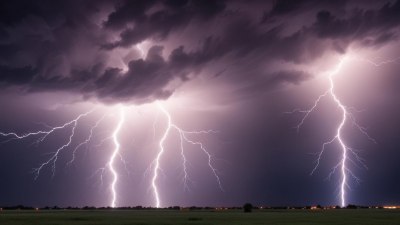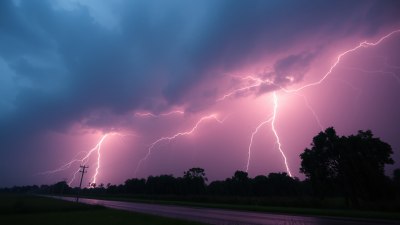How Weather Makes Minor Decisions Existential
Explore how everyday weather influences minor decisions and turns them into existential reflections on life and choice.

Weather is often regarded as a mere backdrop to our daily routines – a simple factor in planning our day. Yet, its influence runs much deeper, affecting the minutiae of choices in ways that provoke reflection on existence itself. This article delves into how seemingly minor decisions, dictated by weather, become windows into our existential experiences, exposing the intertwined nature of environment, mind, and free will.
Consider a common scenario: deciding whether or not to carry an umbrella. For most, it is a straightforward choice, instructed by the weather forecast or visible clouds. Yet beneath this mundane decision lies a subtle nexus of uncertainty, anticipation, and control. We wonder about the accuracy of the forecast, the possibility of inconvenience, and the trade-off between preparedness and freedom. Each option carries with it not merely physical consequences but also psychological weights.
When the sky darkens and the threat of rain looms, the umbrella decision becomes more than functional. It transforms into a metaphor for how we navigate the unpredictable nature of existence. Carrying an umbrella can symbolize a protective gesture, a hedge against adversity, but also an acknowledgement of vulnerability. Opting to leave it behind can express a statement of faith in circumstances or a desire to embrace spontaneity. This duality exemplifies how environmental conditions intertwine with our interpretation of risk and personal agency.
Extending beyond umbrellas, consider clothing choices. Temperature and humidity guide whether we wear layers, light fabrics, or waterproof gear. However, these choices also reveal comfort zones, social conformity, aesthetic preferences, and mood influences. For example, donning a bright raincoat in gloomy weather might be a deliberate act of defiance against melancholy, turning a practical minor decision into an existential assertion of identity amidst nature’s indifference.
Food decisions, too, are shaped by weather, aging from practical to existential layers. On a chilly day, craving warm soups or spicy dishes offers more than nourishment; it meets a primal desire for warmth and comfort. Conversely, on hot days, the pursuit of refreshing salads or cold beverages can echo a greater quest for balance and relief from discomfort. These gastronomic choices create a dialogue between our bodily needs and external environment, underscoring our continuous adaptation and search for equilibrium.
Timing small actions is also subject to weather’s nuanced influence. Choosing when to start a walk, run errands, or meet friends is a dance choreographed by sunshine, wind, or rain. The unpredictability of weather injects a layer of contingency into daily schedules, reminding us of the limits of control. This unpredictability nudges us toward mindfulness, compelling us to accept and adapt, mirroring broader existential encounters with uncertainty and change.
Moreover, minor decisions made under weather’s sway can trigger reflections on interconnectedness. Rain falling on streets, wind rustling leaves, or frost crystallizing windows serve as sensory reminders of our embeddedness within a larger natural system. Choosing to open a window or to keep it shut against a breeze is a humble recognition of our position between nature’s forces and personal boundaries. These moments cultivate a sense of belonging and simultaneous otherness, generating existential awareness about our place in the world.
Weather also plays a key role in social dynamics surrounding minor decision-making. For example, deciding whether to invite friends over or accept invitations often weighs the forecast heavily, as outdoor plans are vulnerable to disruption. This pushes us to negotiate communal needs and expectations, balancing personal preferences with collective experiences. Such choices illuminate social existence as a negotiation of desires, constraints, and contingencies influenced by natural phenomena.
In work contexts, weather impacts minor operational decisions that ripple into larger existential domains. A rainy day might delay commute options or alter office attendance patterns. These adjustments reflect how external conditions impose limits on human plans, fostering acceptance or frustration. Recognizing these effects invites philosophical consideration of free will versus determinism: how much of our daily course is self-directed versus environment-driven?
Psychologically, weather-linked choices expose cognitive biases and emotional undercurrents. Seasonal affective disorder exemplifies how lowered light exposure can affect mood and thus decision tendencies, such as opting for isolation or social withdrawal versus engagement. The weather’s physical parameters interlace with mental states, making simple decisions laden with emotional and existential significance.
On a broader cultural level, weather informs traditions and rituals that center on minor decisions with existential symbolism. For example, seasonal festivals often include acts like lighting candles during winter solstice or preparing particular foods to honor cycles of nature. These collective expressions turn environmental influence into shared meaning, allowing minor choices to serve as vessels of cultural identity and existential continuity.
Philosophically, examining weather’s impact on minor decisions challenges the binary between the trivial and the profound. It reveals how small moments of choice embed reflections of time, impermanence, and selfhood. Each choice affected by weather is a microcosm of human existence — a negotiation between control and chance, individuality and environment, presence and change.
Technological advances also modulate how weather influences decisions. Modern forecasting apps reduce uncertainty, allowing more confident choices but also captivity to digital prediction. This evolution raises questions about authenticity, reliance, and the human experience of unpredictability. Are we losing a fundamental encounter with the unknown by substituting genuine risk with managed expectation? The minor decision about carrying an umbrella thus extends into debates over human interaction with nature and technology’s shaping of existential conditions.
Literature and art similarly explore weather’s role in minor decision-making as a narrative device embodying existential themes. Characters often face weather-imposed decisions that symbolize internal struggles, temporal limits, or fate’s whims. For instance, waiting out a storm becomes a metaphor for endurance and hope, while stepping into rain can signify liberation or surrender. Such portrayals amplify the potency of weather’s subtle influence into profound human stories.
The physicality of weather—the feel of wind, the chill of air, the sting of sun—grounds abstract existential thought in bodily experience. Minor decisions involving weather prompt sensory awareness, anchoring philosophical inquiry in the tangible here-and-now. This grounding fosters holistic understanding where mind, body, and environment merge in the fabric of decision-making and being.
Re-examining weather’s impact on minor choices invites us to appreciate the rich complexity hidden in everyday moments. What seems ordinary becomes extraordinary when viewed through the lens of existential reflection. Carrying or leaving an umbrella, choosing a jacket, timing a departure, selecting a meal—each act reverberates with deeper significance shaped by the ever-changing sky.
Ultimately, weather transforms minor decisions into existential touchstones by highlighting the fragile interplay between certainty and chance. It reminds us that life’s meaning emerges not only from grand events but also from countless humble acts woven into the ambient conditions surrounding us. Recognizing this enriches our awareness and respects the profoundness within routine.











